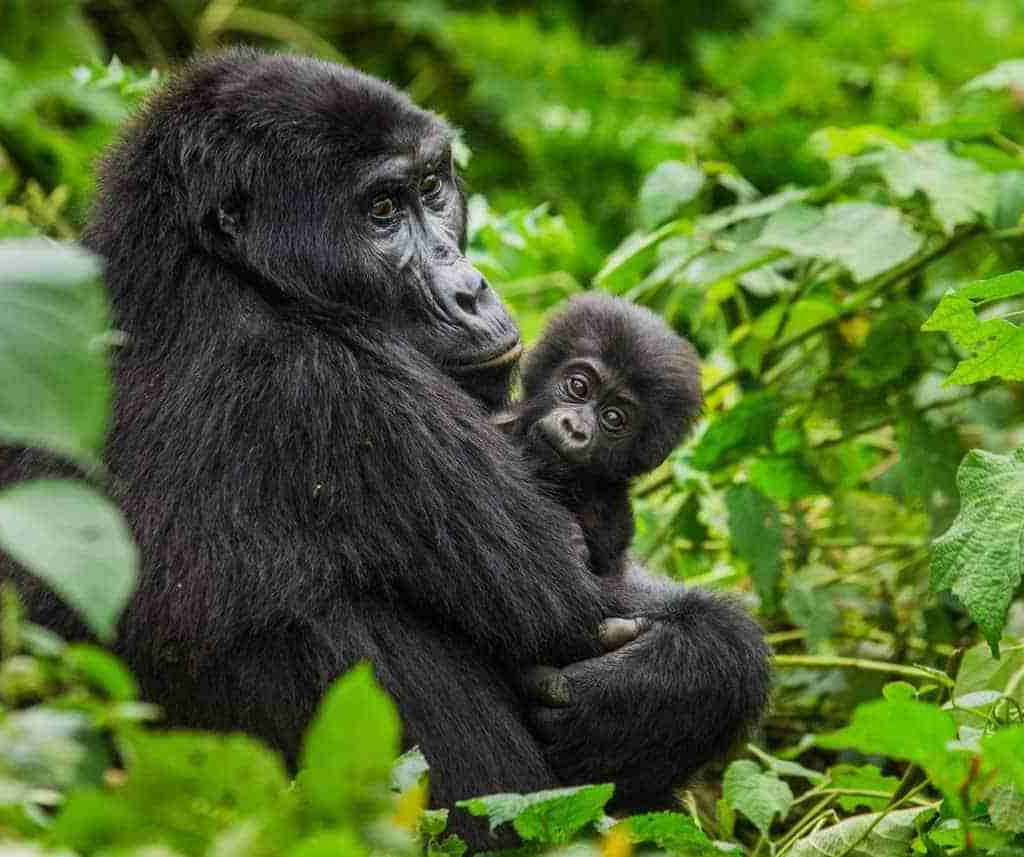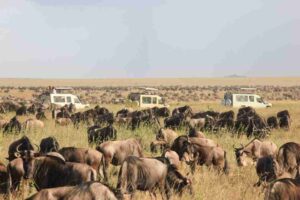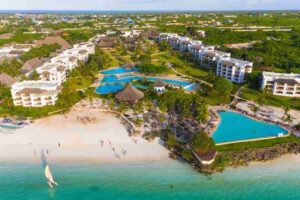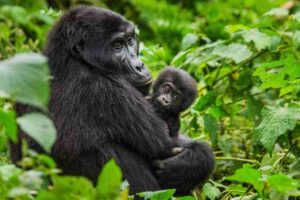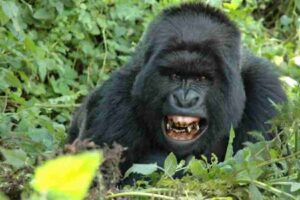Although gorilla trekking in Uganda is considered a year-round activity, the humid rainy seasons and muddy terrain can make it extra challenging and lessen the chances of spotting the gorillas. To make it easier for your client, we recommend traveling during the dry seasons from January to February and June to September.
In Uganda, gorilla trekking primarily takes place in two national parks:
- Bwindi Impenetrable National Park: Located in southwestern Uganda, Bwindi Impenetrable National Park is one of the most renowned destinations for gorilla trekking in Africa. The park is home to roughly half of the world’s remaining mountain gorilla population, making it a critical conservation area. Bwindi’s dense forests and rugged terrain provide a habitat for several habituated gorilla groups that can be tracked by visitors. In addition to gorilla trekking, Bwindi offers opportunities for birdwatching, hiking, and cultural encounters with local communities.
- Mgahinga Gorilla National Park: Situated in the Virunga Mountains along the border with Rwanda and the Democratic Republic of Congo, Mgahinga Gorilla National Park is another important gorilla trekking destination in Uganda. While smaller in size compared to Bwindi, Mgahinga is home to one habituated gorilla group that traverses the park’s montane forests. In addition to gorilla trekking, Mgahinga offers hiking opportunities, including the chance to climb Mount Muhabura, one of the Virunga volcanoes.
Both Bwindi Impenetrable National Park and Mgahinga Gorilla National Park offer unique experiences for gorilla trekking, allowing visitors to observe these magnificent primates in their natural habitat while supporting conservation efforts and local communities. Permits are required for gorilla trekking in both parks and should be obtained in advance through Uganda Wildlife Authority or authorized tour operators.

